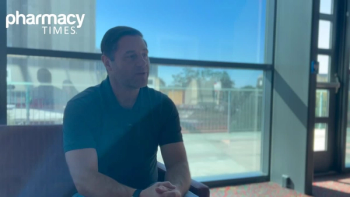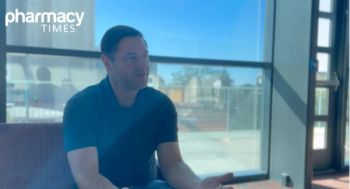Exploratory analyses of results from the SWOG S1801 trial in patients with stage III to IV resectable melanoma demonstrated major pathologic responses in more than half of surgical specimens taken from patients who had been treated with neoadjuvant, pre-operative pembrolizumab. Primary results for S1801 were published in the New England Journal of Medicine in March 2023.
“The pathologic responses seen in S1801 highlight the potential for single-drug immunotherapy to achieve results that we know are important for individual patient outcomes, namely the demonstration of a favorable pathologic response after a few doses of treatment,” said principal investigator Sapna Patel, MD, chair of the SWOG melanoma committee and associate professor melanoma medical oncology at the University of Texas MD Anderson Cancer Center, in a press release.
The presented abstract reported a response to neoadjuvant treatment evaluated using specimens removed from these patients with resectable melanoma during surgery. Specimens were submitted for review on approximately 78% of patients who underwent surgery in the neoadjuvant arm, which Patel noted to be a big success.
Tissues removed during surgery are examined to assess the pathologic response to a treatment and to determine whether actively growing cancer cells, or a residual viable tumor, are present. If no active cancer cells are seen, the tissue is said to have undergone a pathologic complete response to treatment. Further, if active cancer cells make up only 1% to 10% of the tumor bed, it is determined to have undergone a pathologic near-complete response. A major pathologic response is defined as no more than 10% residual viable tumor in the examined tissue, encompassing both the complete response and the near-complete response categories.
“…it is important not to over-interpret the results. The absence of a pathologic response means there is room for improvement, but those patients still likely benefitted from a neoadjuvant approach with immunotherapy where their immune system began priming with tumor in situ than if they had gone to upfront surgery,” said Patel in the press release. “The goal of a short duration of neoadjuvant immunotherapy is to initiate tumor priming, not necessarily to shrink the tumor or demonstrate pathologic response. Even in the absence of a radiographic or pathologic response, a patient’s immune system may have a more amplified and diversified response after a few doses of pre-operative immunotherapy, and then the tumor can be resected.”
About SWOG-1801
Trial Name: A Phase II Randomized Study of Adjuvant Versus Neoadjuvant Pembrolizumab for Clinically Detectable Stage III-IV High-Risk Melanoma
Clinicaltrials.gov ID: NCT03698019
Sponsor: National Cancer Institute
Completion Date: April 2024
The investigators note that pathologic response can make assumptions of facts and are not always evidence. Although the residual viable tumor is a percentage of the total tumor bed, it is not always clear on how large the tumor bed was prior to the initiation of neoadjuvant therapy. Estimates are based on histologic clues and could therefore result in an under-reading response.
Further, among the 135 patients enrolled in S1801 who received neoadjuvant pembrolizumab and subsequently underwent surgery, 105 specimens were submitted for central review to determine pathologic response. The majority of these were lymph node specimens.
“…the observation that there was different distribution of response to the treatment (amount of necrosis) among different lesions and even different areas in the same patient [was particularly interesting],” Victor Prieto, MD, PhD, chair of the Ferenc and Phyllis Gyorkey Research and Education in Pathology at the University of Texas MD Anderson Cancer Center, said in the press release. “This suggests the existence of different tumor phenotypes in the same patient.”
The investigators have also determined that a correlated pathologic response with recurrence-free survival (RFS) was present, with the rate of RFS at 24 months appearing to segregate by pathologic response. This response was at 89% for patients whose tumors achieved a pathologic complete response.
“Soon, we hope to find regimens that are safe and powerful enough where the extent of surgery may even be reduced or avoided,” said Patel in the press release.
Reference
SWOG Cancer Research Network. Major pathologic response to neoadjuvant pembrolizumab in advanced melanoma trial exceeds 50 percent. News release. October 23, 2023. Accessed November 20, 2023. https://www.eurekalert.org/news-releases/1005633






















































































































































































































